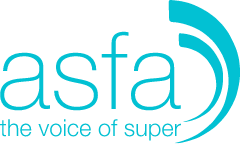2 February 2018
No more meddling with super and Age Pension settings says ASFA – new data show reforms are working
The Association of Superannuation Funds of Australia (ASFA) today released new data showing reforms to superannuation and the retirement funding system were working but needed to be bedded down. Stability needs to be achieved in order to maintain confidence in the system.
ASFA CEO Dr Martin Fahy said the Association’s Pre-Budget Submission analysis showed a substantial and positive impact from recent reforms, in terms of a reduction in government expenditures and increasing tax revenue.
“The Age Pension assets test changes that took effect from 1 January 2017 are helping contain future growth in Age Pension expenditures,” he said.
“Superannuation tax changes have substantially reduced the tax assistance flowing to upper income earners, plus the overall amount of tax concession for super contributions has been reduced by around $1.25 billion a year.”
“In addition, there is a further $1.1 billion a year in greater tax revenue in regard to superannuation investment earnings flowing from the cap on balances in pension phase and changes to the Transition to Retirement pension arrangements. These changes have impacted most on upper income earners.
The number of Age Pension recipients fell from 2,570,072 in December 2016 to 2,494,060 in March 2017, a fall of 3 per cent.
The number of full rate age pensioners rose marginally, from 1, 515,411 to 1,548,590, a rise of around two per cent. However, the total number of Age Pension recipients has continued to fall, with 2,489,591 in total in September 2017.
Total expenditure on the Age Pension in 2017-18 is expected to be $45.4 billion, up marginally from $44.5 billion in 2016-17.
In ASFA’s view, the changes made to the Age Pension were substantial and appear to make the Age Pension fiscally sustainable for Australian governments in the years ahead, while not leaving the great bulk of retirees substantially worse off.
“This will be reinforced by rising superannuation account balances at retirement as the compulsory system matures,” Dr Fahy said.
“However, any further tightening of either the asset or income test could leave many Australians in retirement worse off.”
Dr Fahy said reliance on the Age Pension would decrease further as superannuation balances increase, reinforced by the tighter assets test for the Age Pension and due to the continuing trend for people to remain in paid work after age 65.
“Super is working and will do more of the heavy lifting to deliver retirement outcomes into the future,” he said.
ASFA projections indicate that in 2025, around 20 per cent of people aged 67 will still be in paid employment with a further 40 per cent or so self-funded, or at least not eligible for the Age Pension.
Currently, around 70 per cent of people aged more than 65 receive either a full or part Age Pension. Of those, around 60 per cent are currently on the full Age Pension.
ASFA expects only around 30 per cent of Australians aged more than 65 will be on the full Age Pension by 2025 and by 2055; it could be down to 25 per cent or less.
Dr Fahy said super tax concession changes had decreased the proportion of the total concession for contributions going to those on the top income tax rate, from 13.3 per cent to 10.8 per cent.
The proportion of the concessions in regard to contributions going to those on $37,001 to $80,000 increased from 34.7 per cent to 36.9 per cent, while the proportion going to people on $18,201 to $37,000 increased from 11.9 per cent to 12.4 per cent.
Changes to the level of tax concessions for investment earnings in super accounts, including changes to Transition to Retirement pension arrangements, a tighter cap on non-concessional contributions and a $1.6 million transfer balance cap, have saved the budget a further $1.1 billion a year, with most of the impact on taxpayers in the top two income brackets.
All up, the May 2016 budget changes have reduced the overall amount of tax concession for contributions by around $2.35 billion a year.
“ASFA believes tax and Age Pension settings are working and now is the time for consolidation,” Dr Fahy said.
For further information, please contact:
Teresa Mullan, Media Manager, 0451 949 300.
About ASFA
ASFA is the peak policy, research and advocacy body for Australia’s superannuation industry. It is a not-for-profit, sector-neutral, and non-party political national organisation, which aims to advance effective retirement outcomes for members of funds through research, advocacy and the development of policy and industry best practice.


